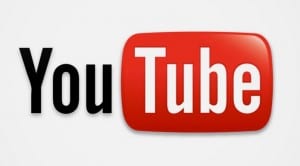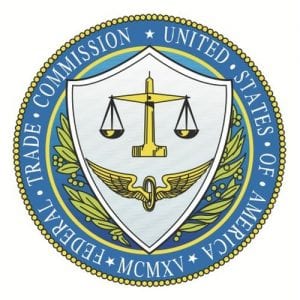Why 2020 Could Be a Disaster for YouTubers
Why the challenges YouTubers face will only get worse...

Life hasn’t been easy for YouTubers for some time. YouTube copyright bots have made it difficult to upload nearly anything to the site without it being claimed, the “adpocalypse” has seen countless legitimate channels getting demonetized and countless other problems have created a minefield for those hoping to make a living on the site.
To that end, things are likely to get significantly worse.
In what amounts to a one-two punch to its own creators, YouTube first announced a change to its terms of service that immediately raised some eyebrows with its clarification that it had “no obligation” to host anyone’s video and that it can delete accounts if they are not “commercially viable”. Though the worst of the changes have since been addressed by YouTube as being misunderstood, other changes still have creators worried.
At the same time, YouTube began requiring creators to label videos of theirs that might appeal to children, leaving many users to wonder where their content fits into this and whether they were compliant or not.
What does this all mean? It means the table has been set for a very messy and challenging 2020 on YouTube. Creators, already struggling with YouTube’s rules, can expect things to get even more heated in the coming year.
The risks here are very high and YouTubers are right to be worried. Sadly, there isn’t much good news that I, or anyone else, can give those that are concerned.
The COPPA Problem

The story actually begins back in September, when YouTube reached a $170 million settlement with the Federal Trade Commission (FTC) over its practices involving children.
The law at issue is the Children’s Online Privacy Protection Act (COPPA). Enacted in 1998 and in effect since 2000, places rules on when and how websites and services can collect personally identifiable information about children under the age of 13. YouTube, theoretically, has always been subject to the law but, according to the FTC, was not in compliance.
They claim that YouTube, and its parent company Google, collected information on minors in a bid to show them more targeted advertising. This was despite the fact that portions of its site were clearly directed at kids.
In addition to the monetary settlement, YouTube was forced to “develop, implement, and maintain a system that permits channel owners to identify their child-directed content on the YouTube platform so that YouTube can ensure it is complying with COPPA.”
That system is what is being implemented now and it requires creators to designate their channels as being either not child their channel is “made for kids”.
According to the settlement, if you fail to comply with this, the burden is on you and the liability can be as high as $42,000 per mislabeled video.
This, in turn, has caused a lot of heartburn among YouTubers. Concerns about what happens if you label a video as being aimed for kids but the content is accidentally not child-friendly is one concern. But the larger is how this could impact channels that ARE targeted at kids. By some estimates, it could cut their revenue by up to 90 percent.
This is made even worse by the fact that, in recent years, YouTube encouraged channels to target younger audiences as a means to avoid demonetization. For example, Glove and Boots returned from a year-long hiatus with more child-friendly after YouTube encouraged them to be less “lowbrow” with their content. Those same channels now face a “COPPA-pocalypse” precisely because they target younger audiences.
(Note: The video talking about the move has since been made private but the Reddit comments explain what happened.)
All of this is bad enough in a vacuum. But combined with other changes to YouTube’s terms of service, it’s pretty clear that the platform is seeking more control over what appears on it and what is eligible for monetization.
The YouTube Terms of Service Changes
Last week, just before the COPPA changes, YouTube made several updates to its terms of service, which are set to go into effect on December 10.
The change that drew the most attention was that it could terminate the service to those that were “no longer commercially viable.” However, that turned out to be a misunderstanding (due in large part to the unclear statement) as YouTube has since said that applies to the YouTube platform, not user accounts.
That said, the TOS change did still indicate that it has “no obligation” to host any video from anyone. To be clear, this has always been the case and YouTube has NEVER had an obligation to host content from its users. Nothing materially has changed here.
Still, it’s interesting that YouTube would call extra attention to this. YouTube has faced a great deal of attention over the years for “censoring” various kinds of content, even though it never had any obligation to host, let alone monetize, anything uploaded to it.
YouTube is under pressure from nearly every direction right now. Copyright holders are pressuring it to stop piracy and musicians, in particular, are wanting it to close the value gap. The advertisers are tired of their ads appearing on inappropriate content. The FTC wants YouTube to cease collecting private information about children. Finally, free speech advocates accuse YouTube of censorship and of throttling opinions it doesn’t like or find commercially acceptable.
In 2020, that pressure is likely coming to a head in a way we haven’t seen before and creators are, most likely, going to be stuck in the middle.
Fixing the Problem
The problem, as is often the case with YouTube, isn’t the laws themselves as much as it is YouTube’s implementation of them. While there are valid reasons to criticize copyright law, COPPA and other laws that impact YouTube, YouTube is forced to interpret those laws using bots and that always creates new problems.
The reason is quite simple: YouTube is too big to police.
As vast as Google’s resources are, even they don’t have a means to human-police some 500 hours of video being uploaded every minute. Bots are simply going to be a fact of life on a platform like YouTube.
But, as we’ve seen with finding copyright-infringing material, determining advertising-friendly content and other community guideline violations, it will be the same for finding content targeted at kids and for whatever else YouTube moves on next.
As YouTube becomes more and more mainstream, it’s going to find itself in more and more crosshairs, which it will dodge using more and more bots. YouTube’s situation is not going to get any better and YouTubers are caught in the middle.
The only solution is a viable competitor. There needs to be a platform that allows users to upload content and monetize it but is also small enough to avoid the trappings of YouTube. However, this “big enough to make money but small enough to not need bots” is a tough needle to thread.
Even if the service was more of a “roll your own video platform” it would at least provide an alternative for larger YouTubers that can bring their own audience.
But that isn’t likely to happen. YouTube is not just too big to police, but too big to take on. Success without YouTube is pretty much impossible and success with YouTube is becoming more difficult every day.
These changes just highlight the nature of the problem.
Bottom Line
To be clear, none of this represents a major change for YouTube. When you look at the YouTube story over the years, it’s one of outside pressure forcing YouTube to lean harder on bots.
As YouTube becomes more mainstream, it has to meet the obligations of a mainstream media company using bots because of the sheer volume of content uploaded to it.
Users aren’t bound by the judgment of the law as much as bound by the judgment of the bots. Those bots are famously fickle, inaccurate and the humans that do operate them are infamously uncaring about that.
YouTube has always been pitched as a paradise for creators but it’s rapidly been turning into a bot-run dystopia. The worst part is that the clampdown has done little to stop piracy, hate speech and other scourges that plague it.
To that end, 2020 is looking to be more of the same as an ongoing disaster grows into a bigger one. For YouTubers, there’s simply no end in sight.
Want to Reuse or Republish this Content?
If you want to feature this article in your site, classroom or elsewhere, just let us know! We usually grant permission within 24 hours.
